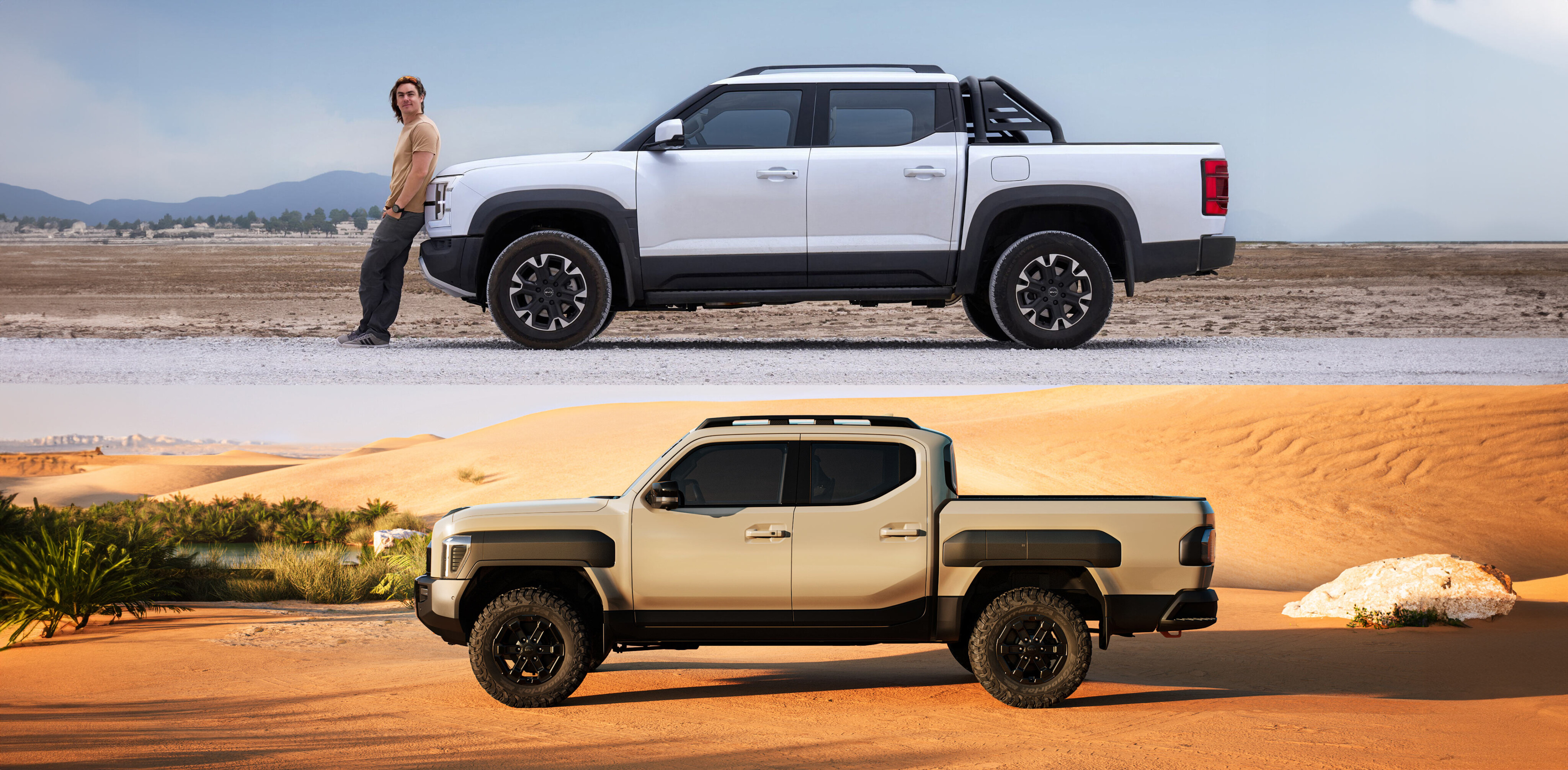
The ute segment is running red-hot right now, and there’s no shortage of newcomers looking to steal a slice of the gigantic sales pie in Australia.
One such upstart is the Kia Tasman, the first body-on-frame dual cab for the South Korean automaker, and one that’s already polarizing punters with its unique styling. However, metrics often matter more than aesthetics in this segment, so how does the Tasman tally up when you put it next to its core segment rivals?
There’s another East-Asian challenger entering the ring too, in the form of the BYD Shark 6. The BYD brand might still be in nappies, but it’s already gunning for market share with a boundary-pushing plug-in hybrid offering that’s already lodged thousands of orders before deliveries have even started. Are Aussies finally ready to embrace electrified utes in a big way? As with the Tasman, the Shark 6 will need to deliver on some critical numbers if it’s to attain true staying power in this ultra-competitive market.
To help you figure out the pecking order – and decide which of these new utes fits your needs better – we’ve arranged this helpful data matrix. With both the Tasman and Shark 6 being so new (the Tasman isn’t due to arrive until mid-2025), there are a few knowledge gaps, critically around both of their Gross Combination Masses (GCM), which means calculating their true worth as trailer-haulers is a little difficult.
But there's definitely one thing to note about the BYD and the Kia: They're massive. That Shark 6 in particular, which is the longest, widest and tallest of this bunch by considerable margins, but even the Kia eclipses something as sizable as a Ford Ranger. How do they do they measure in terms of cargo-carrying capacity though?
Alongside the Kia and BYD, we’ve put the stats for four segment favourites so you can see how the new arrivals stack up against stalwarts like the Toyota Hilux, Ford Ranger, Isuzu D-Max and Mitsubishi Triton. Also, we’ve gone ahead and done the maths on your behalf so you can see just how much each of them can carry when either at their maximum rated payload, or their maximum rated tow weight.
Size
| Tasman | Shark 6 | Ranger | Hilux | Triton | D-Max | |
| Length | 5410mm | 5457mm | 5370mm | 5325mm | 5320mm | 5280mm |
| Width | 1930mm | 1971mm | 1918mm | 1855mm | 1865mm | 1870mm |
| Height | 1890mm | 1925mm | 1886mm | 1865mm | 1795mm | 1785mm |
| Wheelbase | 3270mm | 2920mm | 3270mm | 3085mm | 3130mm | 3125mm |
| Ground Clearance | 224mm | 230mm | 234mm | 216mm | 228mm | 235mm |
| Approach | Unknown | 31.0 | 30.0 | 29.0 | 30.4 | 30.0 |
| Departure | Unknown | 19.3 | 23.0 | 27.0 | 22.8 | 23.9 |
| Ramp-over | Unknown | 17.0 | 21.0 | Unknown | 23.4 | 23.3 |
| Wading depth | 800mm | 700mm | 800mm | 700mm | Unknown | 800mm |
Tub dimensions
| Tasman | Shark 6 | Ranger | Hilux | Triton | D-Max | |
| Length | 1512mm | 1520mm | 1450mm | 1570mm* | 1555mm | 1570mm |
| Width | 1572mm | 1500mm | 1520mm | 1645mm* | 1545mm | 1530mm |
| Height | 540mm | 517mm | 525mm | 495mm* | 525mm | 490mm* |
| Between arches | 1186mm | unknown | 1217mm | 1105mm* | 1135mm | 1122mm |
Mechanical
| Tasman | Shark 6 | Ranger | Hilux | Triton | D-Max | |
| Power | 154kW | 321kW | 154kW | 150kW | 150kW | 140kW |
| Torque | 441Nm | 650Nm | 500Nm | 500Nm | 470Nm | 450Nm |
| Gearbox | 8sp auto | 1sp electric | 10sp auto | 6sp auto | 6sp auto | 6sp auto |
Towing
| Tasman | Shark 6 | Ranger | Hilux | Triton | D-Max | |
| Kerb weight | Unknown | 2710kg | 2276kg | 2150kg | 2125kg | 2030kg |
| Max tow rating | 3500kg | 2500kg | 3500kg | 3500kg | 3500kg | 3500kg |
| GVM | Unknown | 3500kg | 3230kg | 3050kg | 3200kg | 3100kg |
| GCM | Unknown | Unknown | 6350kg | 5850kg | 6250kg | 6000kg |
| Max payload | 1017kg | 790kg | 954kg | 900kg | 1075kg | 1070kg |
| Payload at max trailer weight | Unknown | Unknown | 574kg | 200kg | 625kg | 470kg |
| Trailer weight at max payload | Unknown | Unknown | 3120kg | 2800kg | 3050kg | 2900kg |
* denotes information sourced from a non-OEM dataset.

COMMENTS